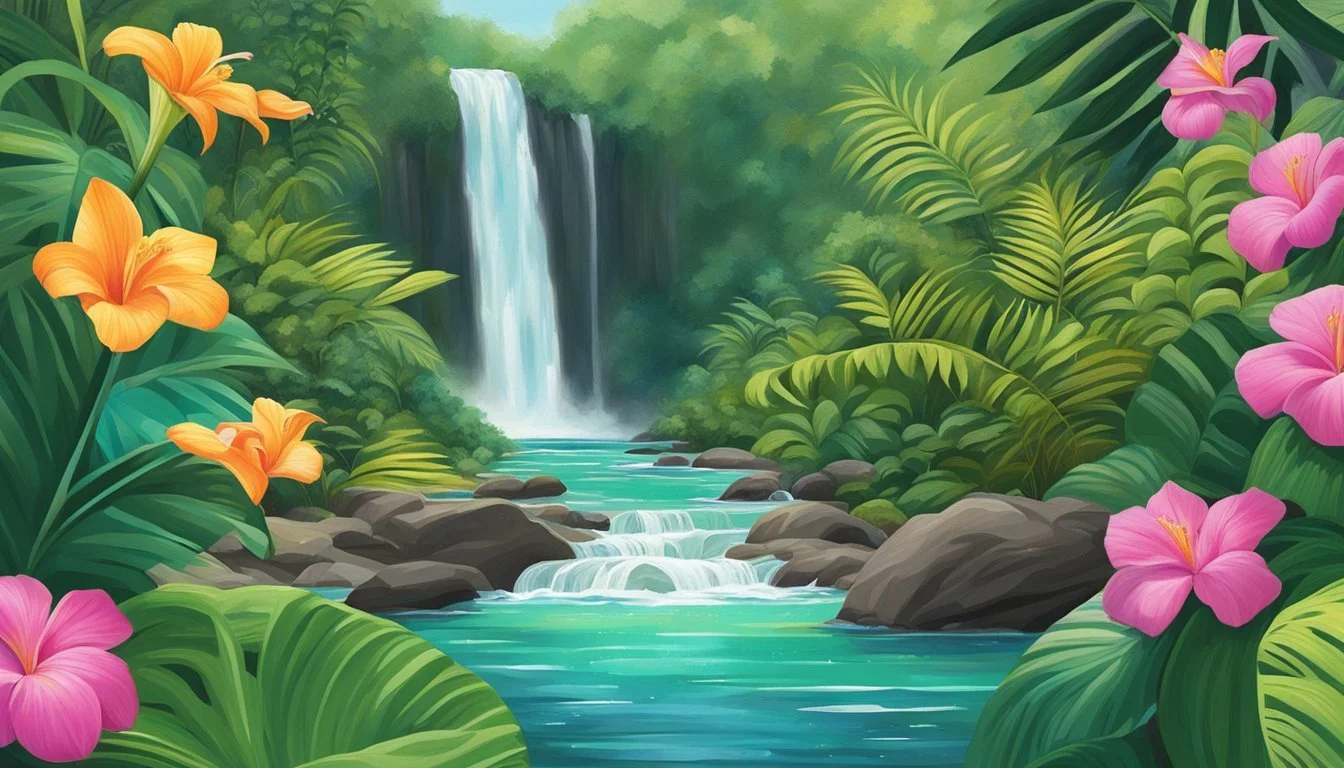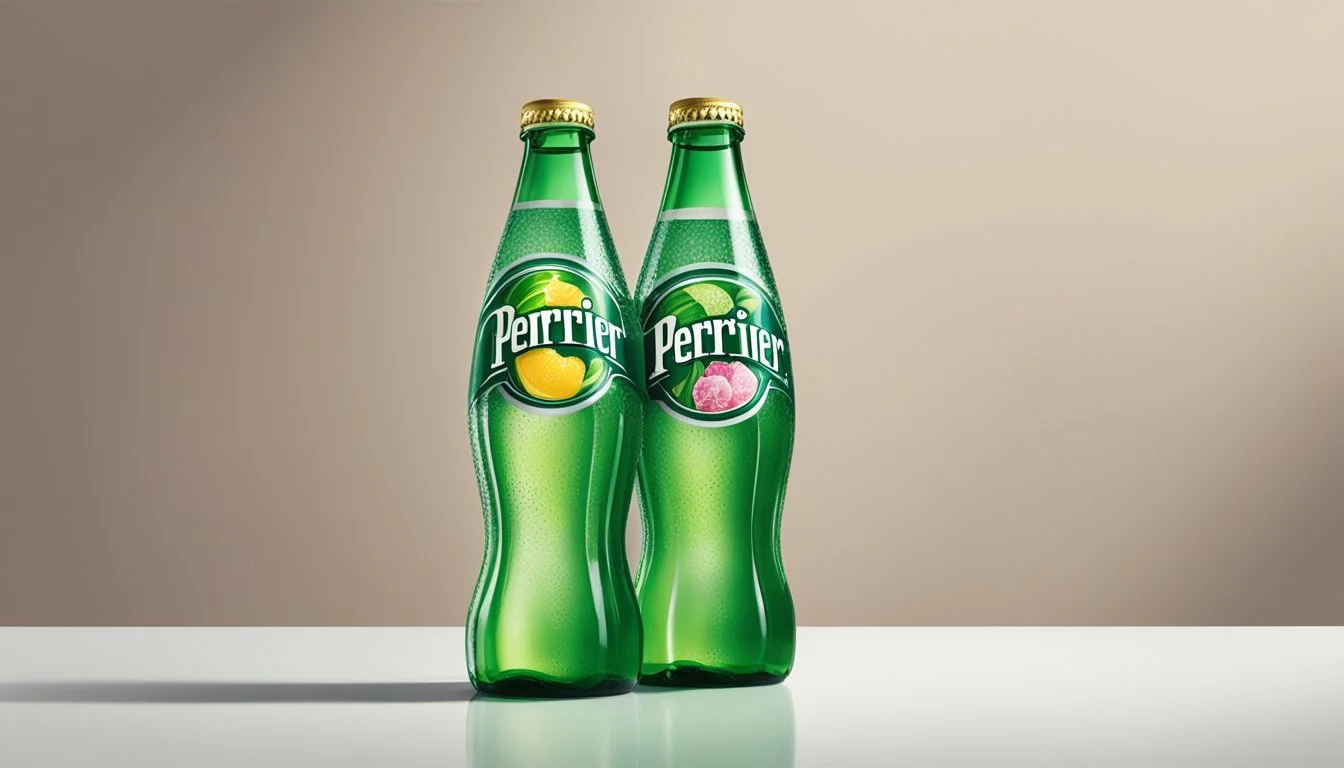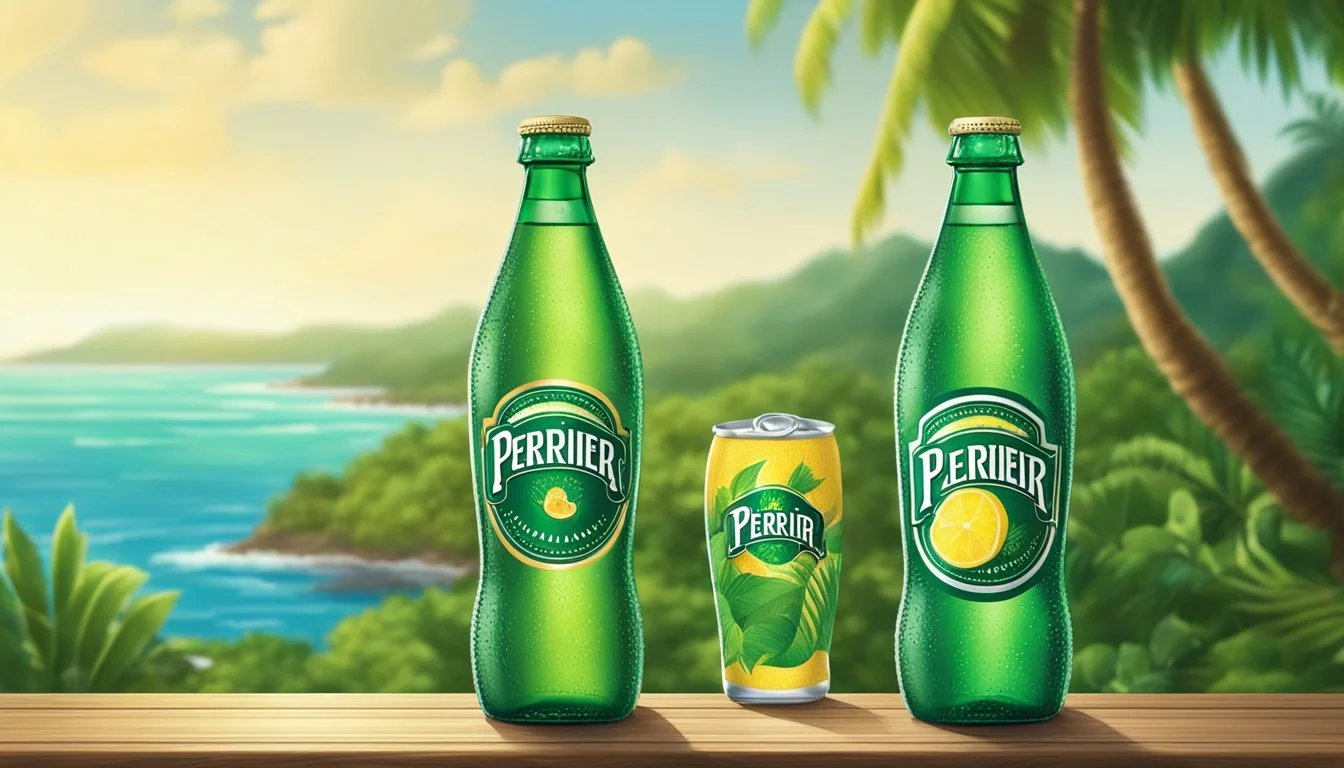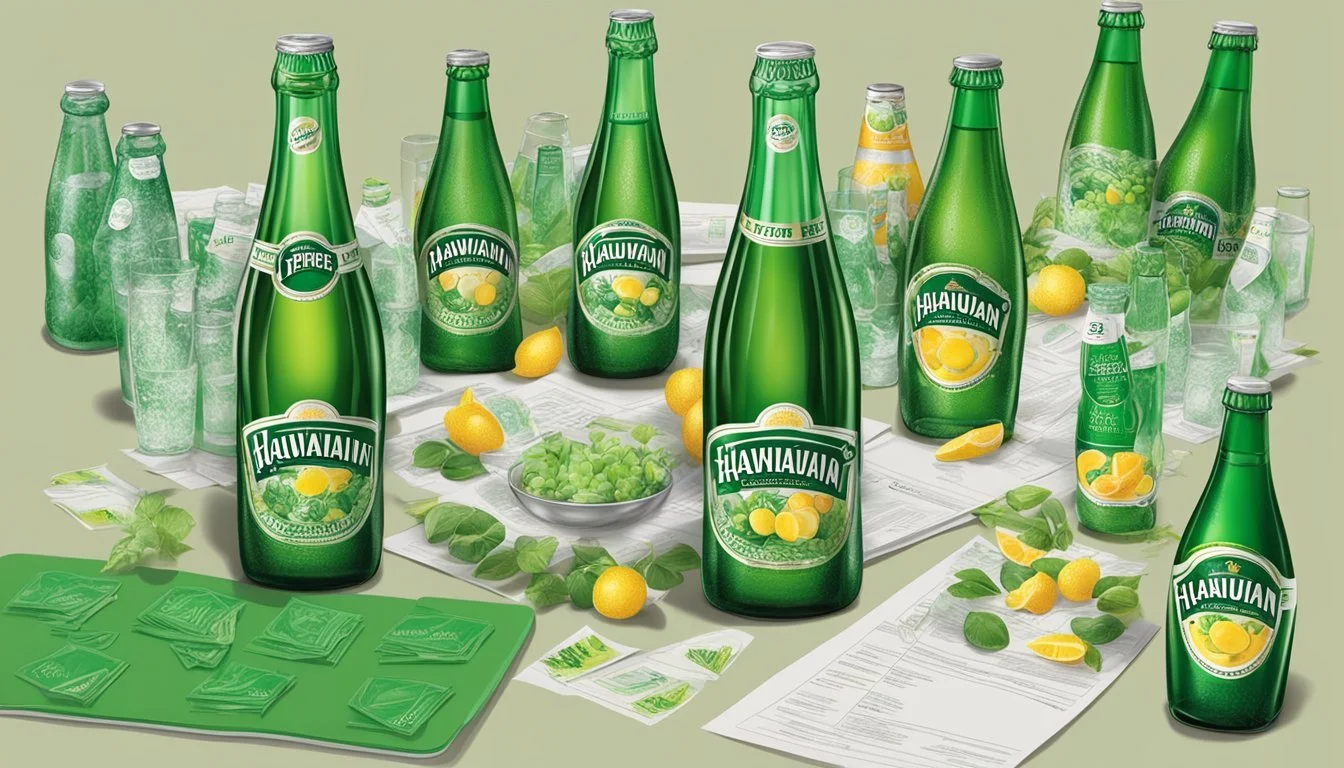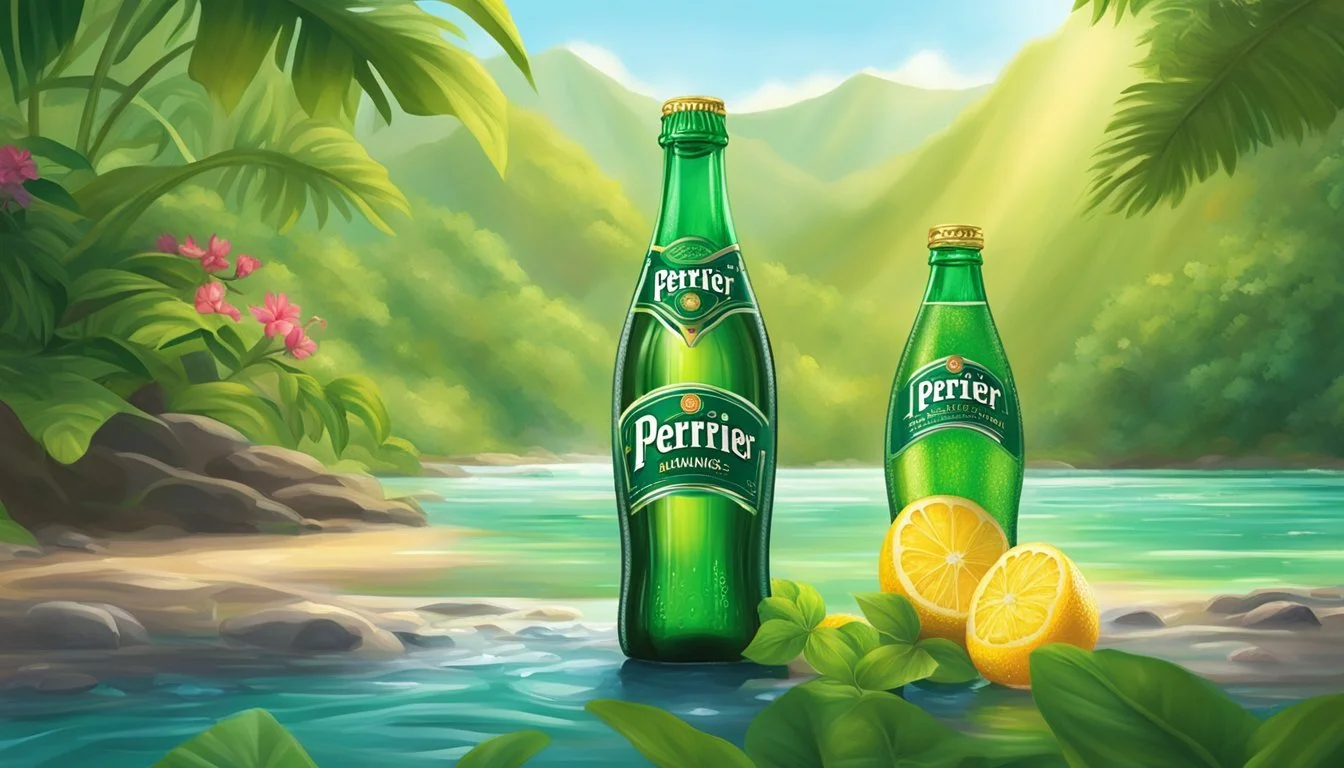Perrier vs. Hawaiian Springs
Expert Comparison of Bottled Water Quality
Choosing the right bottled water can be a refreshing decision that impacts both your taste buds and your health. When comparing Perrier and Hawaiian Springs, two notable brands with distinct characteristics, many consumers find themselves weighing the benefits and downsides of each option. Perrier, with its rich history and effervescent bubbles, offers a sparkling experience that many find invigorating. In contrast, Hawaiian Springs offers a smooth, naturally alkaline still water sourced from the Big Island of Hawaii, appealing to those who prefer a more subtle refreshment.
For those who crave a fizzy kick, Perrier stands out with its unique carbonation and crisp mineral taste. Perrier's natural carbonation and slight mineral tang make it a favorite for sparkling water enthusiasts. Originating from the Vergèze spring in France, this water boasts a legacy that dates back to 1863, adding a touch of sophistication to hydration.
Hawaiian Springs, on the other hand, offers a distinctly pure drinking experience. Sourced from the pristine Kea'au aquifer in Hawaii, this water is naturally filtered through volcanic rock, resulting in an alkaline pH level that some believe offers better hydration and health benefits. For those who prioritize a clean, mineral-free taste, Hawaiian Springs provides a refreshing and smooth option. Whether you favor the sparkling allure of Perrier or the pure tranquility of Hawaiian Springs, your choice ultimately depends on your personal preference for taste and the unique benefits of each water.
Understanding Bottled Water
Bottled water encompasses a variety of types, each differing in source, treatment, and additional properties. Understanding these distinctions can help consumers make informed choices.
Defining Bottled Water
Bottled water is water that is sealed in bottles for human consumption. It must meet safety standards set by governmental agencies. The packaging can vary from small, single-serving bottles to larger containers.
There are different types such as spring water, mineral water, and purified water. Spring water originates from underground formations and naturally flows to the surface. Mineral water contains minerals and trace elements from its source. Purified water undergoes processes such as distillation or filtration to remove impurities.
Sources of Bottled Water
The source of bottled water significantly impacts its taste and mineral content. For instance, spring water is collected from natural springs where it rises to the surface. This type of water typically retains natural minerals present in the source.
Mineral water comes from mineral springs and must contain a specific amount of dissolved minerals. Purified water, including types like distilled water, may originate from any municipal source but is processed to eliminate contaminants and impurities.
Varieties of Bottled Water
Bottled water can be categorized into multiple varieties, each with unique characteristics. Sparkling water is carbonated, adding a fizzy texture many people enjoy. Alkaline water has a higher pH, which some believe offers health benefits, though scientific support varies.
Distilled water is a form of purified water that has been boiled into vapor and condensed back into liquid, removing virtually all impurities. Other types include natural artesian water, sourced from aquifers, and flavored or enhanced waters, which have added minerals or flavors for taste preference.
Health and Hydration
When comparing Perrier and Hawaiian Springs, it's crucial to look at how each brand supports hydration and overall health. Key areas to examine include hydration capabilities, the presence of beneficial minerals and electrolytes, and the adherence to water safety standards set by regulatory bodies.
Hydration and Its Importance
Hydration is essential for maintaining bodily functions such as digestion, circulation, and temperature regulation. Both Perrier and Hawaiian Springs offer effective means of hydration. Perrier's carbonation can make it a refreshing alternative to regular water, encouraging people to drink more.
Hawaiian Springs provides a smooth, clean-tasting option, appealing to those who prefer still water. Staying hydrated helps keep energy levels up, supports organ function, and prevents dehydration-related issues like headaches and fatigue.
Minerals and Electrolytes
Minerals and electrolytes like calcium, magnesium, and potassium play vital roles in body functions. Perrier is known for its mineral-rich content, containing natural carbonation from its source in Vergèze, France. This adds to the taste and provides trace amounts of minerals.
Hawaiian Springs, sourced from deep volcanic rock aquifers in Hawaii, also contains natural minerals. The water is slightly alkaline, with a smooth taste that reflects its unique geological origins. Both brands contribute to daily mineral intake, which is essential for muscle function, nerve transmission, and bone health.
Water Safety Standards
Safety standards for bottled water are set by organizations like the EPA in the United States. Both Perrier and Hawaiian Springs meet these stringent criteria, ensuring the water is safe for consumption. Perrier undergoes regular testing to maintain its reputation for quality.
Hawaiian Springs adheres to local and national regulations, emphasizing purity and safety. Consumers can trust that both brands meet the required standards for safe drinking water, offering a reliable alternative to tap water.
Tasting Notes
When comparing Perrier and Hawaiian Springs, flavor profiles, mineral content, and overall mouthfeel are critical. Both waters offer unique characteristics that cater to different preferences and occasions.
Profile of Perrier
Perrier water is renowned for its bold bubbles and refreshing taste. Sourced from a natural spring in Vergèze, France, Perrier is rich in minerals like calcium and magnesium, which contribute to its distinctive flavor.
The sparkling nature of Perrier adds a crisp sensation, making it a popular choice for those who enjoy carbonation. The mineral content also gives it a slightly salty note, adding depth to its taste.
Profile of Hawaiian Springs
Hawaiian Springs water boasts a pure and smooth taste, derived from Hawaii's Mauna Loa volcano. Known for its exceptional purity, this water offers a clean and light flavor that is free from any metallic or chlorinated tastes often found in other bottled waters.
The water is naturally filtered through volcanic rock, enhancing its mineral content while maintaining a refreshing profile. It is favored for its delicate taste and silky mouthfeel.
The Role of a Water Sommelier
A water sommelier has the expertise to discern subtle differences in bottled water, similar to a wine sommelier. They evaluate aspects such as mineral content, mouthfeel, taste, and source purity. This specialized knowledge helps in distinguishing the unique qualities of Perrier and Hawaiian Springs.
Water sommeliers consider factors such as origin, bottling process, and natural filtration when assessing quality. Their insights can guide consumers toward making an informed choice based on preferences for taste and purity.
Through their trained palate, water sommeliers offer a deeper appreciation for the subtle nuances between various bottled waters, highlighting the significance of mineral balance and flavor profiles in everyday hydration.
Environmental and Ethical Considerations
Both Perrier and Hawaiian Springs take different approaches to their environmental impact and ethical considerations, focusing on their bottling processes and the ecosystems from which they draw their water.
Bottling Processes and Sustainability
Perrier has implemented several sustainability initiatives to reduce its carbon footprint. The company uses recycled and recyclable glass bottles for its sparkling water, minimizing plastic waste. They have also invested in eco-friendly transportation methods, reducing emissions during distribution.
Hawaiian Springs, on the other hand, uses primarily plastic bottles for their water products. This raises concerns about the release of harmful chemicals, like BPA, especially under conditions of heat or sunlight. Hawaiian Springs has started using BPA-free plastic for some of their bottles, but the environmental impact of plastic waste remains significant.
Water Sources and Ecosystem Impact
Perrier sources its water from a natural sparkling mineral spring in Vergèze, France. This well has a long history of careful management to ensure that the surrounding ecosystem is not disrupted. The company has measures in place to maintain water quality and protect local biodiversity.
Hawaiian Springs sources its water from the Kea'au aquifer in Hawaii. This aquifer is a sustainable source, as it is continually replenished by rainfall. However, there are concerns about over-extraction affecting local water tables and nearby ecosystems. Hawaiian Springs has implemented monitoring systems to ensure sustainable extraction levels, aiming to balance their operations with environmental protection.
Brand Analysis
Both Perrier and Hawaiian Springs have established strong market positions, but they cater to different consumer preferences and utilize varying marketing strategies to maintain their foothold.
Market Position of Perrier
Perrier, a brand owned by Nestlé, has been a leading name in the mineral water segment for decades. It is known for its distinctive green bottles and effervescent, sparkling water. Perrier's market presence is robust, primarily due to its wide distribution through major retailers like Whole Foods and its strong international recognition.
The brand's marketing strategies often emphasize its premium quality and sophisticated image. Perrier sources its water from the Vergèze spring in France, which adds to its allure of authenticity. It competes directly with other premium brands like San Pellegrino, another Nestlé brand, and imports from Europe frequently.
Perrier is prominent in metropolitan areas and upscale markets, appealing to health-conscious consumers and those seeking a touch of luxury in their everyday lives. Its partnerships and sponsorships often include high-profile events and luxury goods, reinforcing its image as a chic and fashionable choice.
Market Position of Hawaiian Springs
Hawaiian Springs is a smaller, niche brand in the bottled water market, sourcing its water from aquifers in Hawaii. This unique origin gives it a distinctive edge and a story that appeals to eco-conscious consumers. The water is marketed as pure and natural, capturing the pristine image of the Hawaiian landscape.
Unlike Perrier, Hawaiian Springs focuses on still water and emphasizes its low environmental footprint, often highlighting its sustainable practices on the packaging and in marketing campaigns. It is less about luxury and more about purity and environmental responsibility.
The brand is primarily available in natural and health food stores, including Whole Foods, which aligns with its target demographic. Hawaiian Springs leverages its Hawaiian heritage to create a brand image that is synonymous with natural purity and environmental sustainability. This positioning helps it stand out in a crowded market and attract consumers who prioritize ethical and health-related aspects of their purchasing decisions.
Consumer Information
When choosing between Perrier and Hawaiian Springs bottled water, consumers often look at labeling, mineral content, pricing, accessibility, and customer reviews. These factors can significantly impact the decision-making process.
Labeling and Mineral Content
Perrier and Hawaiian Springs offer distinct labeling and mineral profiles. Perrier, sourced from a natural spring in France, provides detailed labels with information including mineral content and pH level, which is around 5.5. Its carbonated nature adds an effervescent texture.
Hawaiian Springs water, sourced from the Big Island of Hawaii, boasts a naturally alkaline pH of around 7.7 to 8.2. Its labels emphasize purity and the absence of artificial additives. Both brands list essential mineral content, helping consumers choose based on nutritional preferences.
Pricing and Accessibility
Pricing varies significantly between Perrier and Hawaiian Springs. Perrier, being an international brand, is often available in a wide range of sizes and packaging, from small cans to large bottles. Prices can range from $1 for a small bottle to $10 for larger packs.
Hawaiian Springs, although more niche, usually carries a higher price per unit due to its unique source and limited distribution. A bottle typically ranges from $2 to $5. Accessibility is more limited compared to Perrier, with fewer retailers carrying the brand.
Customer Sentiment and Reviews
Customer reviews for Perrier often highlight its refreshing carbonation and unique taste. Its popularity is evident in numerous positive reviews online, praising its quality and distinctiveness. It generally holds a high rating across various platforms.
Conversely, Hawaiian Springs receives commendation for its smooth, clean taste and natural alkalinity. Customers appreciate the brand’s commitment to purity and the refreshing quality of its water. However, some reviewers note the higher price as a downside, though they still recognize the value it offers in terms of quality.
Regulations and Standards
Ensuring the quality and safety of bottled water like Perrier and Hawaiian Springs involves strict adherence to various regulatory guidelines. These guidelines vary between countries but generally aim to ensure that bottled water is safe for consumption and meets certain quality standards.
FDA and EPA Guidelines
In the United States, the Food and Drug Administration (FDA) oversees bottled water, ensuring it meets stringent standards for safety and quality. The FDA's regulations address contaminants and require specific labeling to identify the type of water, such as spring, purified, or artesian. The FDA draws some of its standards from the Environmental Protection Agency (EPA), which regulates tap water and sets limits for various contaminants like lead, nitrates, and other harmful substances.
Bottled water producers must comply with both the FDA's and EPA's guidelines to ensure their products are safe for public consumption. Testing and regular inspections are mandated to maintain these safety standards. Labeling requirements ensure transparency about the water source and treatment methods used. Water treated by processes such as distillation or reverse osmosis often falls under the purified category, provided it meets the established criteria.
International Standards
Globally, regulations for bottled water can vary significantly. The World Health Organization (WHO) provides guidelines that many countries adopt as part of their regulatory frameworks. These international standards often complement and, at times, exceed U.S. regulations in stringency.
The European Union (EU), for instance, has comprehensive regulations that require bottled water to meet specific microbiological and chemical standards. The EU also mandates that natural mineral water cannot undergo any treatment that alters its natural composition, maintaining its mineral content.
Codex Alimentarius Commission, established by the UN's Food and Agriculture Organization and WHO, also sets international food standards, including bottled water. These guidelines cover everything from hygienic production to labeling requirements, ensuring consumers across different regions receive safe and high-quality bottled water.
Conclusion
When comparing Perrier and Hawaiian Springs bottled water, there are clear distinctions in taste, origin, and overall experience.
Perrier, originating from the Vergèze spring in France, offers a sparkling texture and a distinctive mineral taste. Hawaiian Springs, on the other hand, provides a still option from the Big Island of Hawaii, known for its smooth and naturally alkaline profile.
For those who prefer sparkling water, Perrier delivers a crisp, effervescent experience that refreshes the palate. It's often recommended by water sommeliers for its balanced mineral content and signature fizz.
In contrast, Hawaiian Springs is ideal for those seeking a pure, serene drinking experience. The water's natural alkalinity and silky texture make it a standout choice for hydration and enjoyment.
A side-by-side comparison might look like this:
Feature Perrier Hawaiian Springs Type Sparkling Still Origin France Hawaii Taste Crisp and mineral-rich Smooth and alkaline Ideal For Refreshment, Mixing Hydration, Pure Taste
The bottom line remains clear: Perrier is an excellent choice for those who enjoy sparkling, mineral-rich water. Hawaiian Springs offers a more tranquil, pure drinking experience with its still, naturally alkaline water.
No matter your preference, both options have unique attributes that cater to different tastes and needs.
More About Perrier
Icelandic Glacial vs Perrier: Which Bottled Water is Better?
Mountain Valley Spring Water vs Perrier: Which Bottled Water is Better?
Perrier vs Kirkland Signature: Which Bottled Water is Better?
Perrier vs Richard's Rainwater: Which Bottled Water is Better?
Perrier vs Whole Foods Italian Still Mineral water: Which Bottled Water is Better?
More About Hawaiian Springs
Acqua Pana vs Hawaiian Springs: Which Bottled Water is Better?
Aqua Carpatica vs Hawaiian Springs: Which Bottled Water is Better?
Aquafina vs Hawaiian Springs: Which Bottled Water is Better?
Arrowhead vs Hawaiian Springs: Which Bottled Water is Better?
Boxed Water vs Hawaiian Springs: Which Bottled Water is Better?
Castle Rock vs Hawaiian Springs: Which Bottled Water is Better?
Core Hydration vs Hawaiian Springs: Which Bottled Water is Better?
Deer Park vs Hawaiian Springs: Which Bottled Water is Better?
Essentia vs Hawaiian Springs: Which Bottled Water is Better?
Hawaiian Springs vs 1907water: Which Bottled Water is Better?
Hawaiian Springs vs 7-Select: Which Bottled Water is Better?
Hawaiian Springs vs Alkaline88: Which Bottled Water is Better?
Hawaiian Springs vs Antipodes: Which Bottled Water is Better?
Hawaiian Springs vs Big Chill: Which Bottled Water is Better?
Hawaiian Springs vs BodyArmor: Which Bottled Water is Better?
Hawaiian Springs vs Cascade Mountain: Which Bottled Water is Better?
Hawaiian Springs vs CBD Living: Which Bottled Water is Better?
Hawaiian Springs vs Crystal Geyser: Which Bottled Water is Better?
Hawaiian Springs vs Crystal Lake: Which Bottled Water is Better?
Hawaiian Springs vs Essence pH10: Which Bottled Water is Better?
Hawaiian Springs vs Hawaii Volcanic: Which Bottled Water is Better?
Hawaiian Springs vs Kirkland Signature: Which Bottled Water is Better?
Hawaiian Springs vs Liquid Death: Which Bottled Water is Better?
Hawaiian Springs vs Mananalu: Which Bottled Water is Better?
Hawaiian Springs vs Open Water: Which Bottled Water is Better?
Hawaiian Springs vs Proud Source: Which Bottled Water is Better?
Hawaiian Springs vs Pure Life: Which Bottled Water is Better?
Hawaiian Springs vs Purely Sedona: Which Bottled Water is Better?
Hawaiian Springs vs Refreshe: Which Bottled Water is Better?
Hawaiian Springs vs Richard's Rainwater: Which Bottled Water is Better?
Hawaiian Springs vs Simple Truth: Which Bottled Water is Better?
Hawaiian Springs vs Solan de Cabras: Which Bottled Water is Better?
Hawaiian Springs vs Talking Rain AQA: Which Bottled Water is Better?
Hawaiian Springs vs The Well: Which Bottled Water is Better?
Hawaiian Springs vs Tru Alka: Which Bottled Water is Better?
Hawaiian Springs vs Weird Water: Which Bottled Water is Better?
Hawaiian Springs vs Whole Foods 365: Which Bottled Water is Better?
Hawaiian Springs vs Whole Foods Italian Still Mineral water: Which Bottled Water is Better?
Ice Mountain vs Hawaiian Springs: Which Bottled Water is Better?
Icelandic Glacial vs Hawaiian Springs: Which Bottled Water is Better?
Just Water vs Hawaiian Springs: Which Bottled Water is Better?
Mountain Valley Spring Water vs Hawaiian Springs: Which Bottled Water is Better?
Nestle Pure Life vs Hawaiian Springs: Which Bottled Water is Better?
Poland Spring vs Hawaiian Springs: Which Bottled Water is Better?
San Pellegrino vs Hawaiian Springs: Which Bottled Water is Better?
Smartwater vs Hawaiian Springs: Which Bottled Water is Better?
Topo Chico vs Hawaiian Springs: Which Bottled Water is Better?
Zephyrhills vs Hawaiian Springs: Which Bottled Water is Better?



